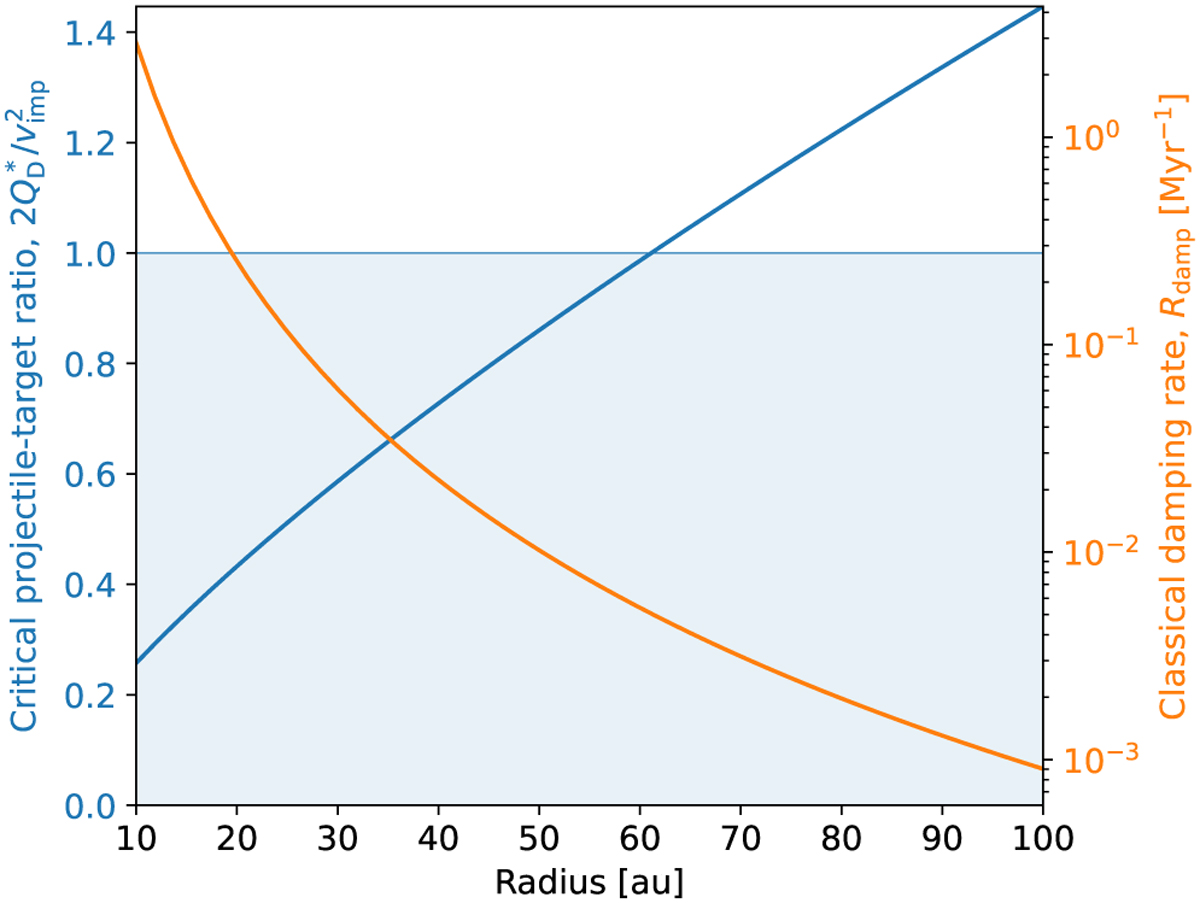Fig. 10

Download original image
Example calculation of critical projectile-to-target mass ratio (in blue) and the classical damping rate given by Eq. (5) for 1 mm grains as functions of radius in a wide disc around a solar-mass star, with particle ![]() given by model 3 in Table 1, an average eccentricity of 〈e〉 = 0.01, particles ranging from 1 µm to 100 m in size with a power-law size distribution exponent q = 3.5, and a disc mass of 0.1 M⊕. This example illustrates how, in a wide disc, collisional damping may be a non-monotonous function of radius: inefficient at short radii due to low projectile-to-target ratio and slow at large radii due to low collisional rate, with a ‘sweet spot’ in the middle where damping is both efficient and fast enough to be observed assuming, for example, a system age of 100 Myr. See Sect. 5.1.
given by model 3 in Table 1, an average eccentricity of 〈e〉 = 0.01, particles ranging from 1 µm to 100 m in size with a power-law size distribution exponent q = 3.5, and a disc mass of 0.1 M⊕. This example illustrates how, in a wide disc, collisional damping may be a non-monotonous function of radius: inefficient at short radii due to low projectile-to-target ratio and slow at large radii due to low collisional rate, with a ‘sweet spot’ in the middle where damping is both efficient and fast enough to be observed assuming, for example, a system age of 100 Myr. See Sect. 5.1.
Current usage metrics show cumulative count of Article Views (full-text article views including HTML views, PDF and ePub downloads, according to the available data) and Abstracts Views on Vision4Press platform.
Data correspond to usage on the plateform after 2015. The current usage metrics is available 48-96 hours after online publication and is updated daily on week days.
Initial download of the metrics may take a while.


